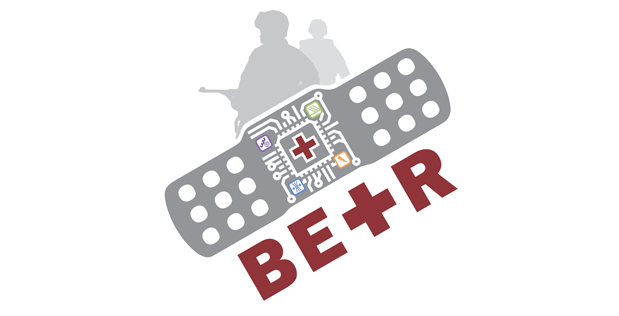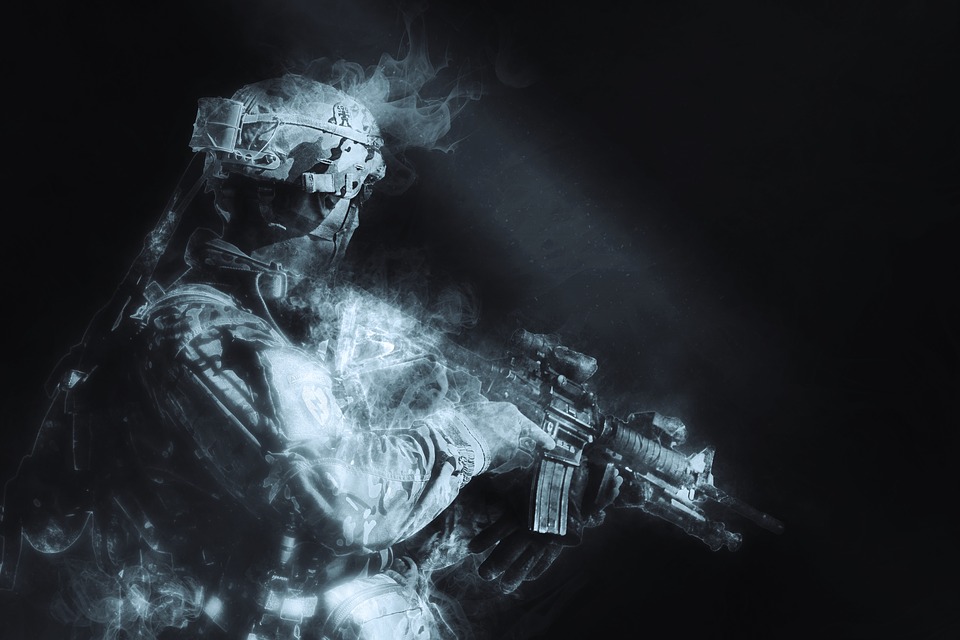Beneath a blizzard of buzzwords surrounding cutting edge medical treatments, a new defense research program is bioengineering soldiers for smart and adaptive wound recovery by combining bioelectronics, artificial intelligence, biosensors, tissue engineering, and cellular regeneration.
‘Not just personalized medicine, but dynamic, adaptive, and precise human therapies’ that adjust to the wound state moment by moment to provide greater resilience to wounded warfighters.
Like with most technologies before they become available for commercial use, they are usually developed for and enlisted by the military first.
The Defense Advanced Research Projects Agency (DARPA) launched the Bioelectronics for Tissue Regeneration (BETR) program on Wednesday for the intelligent healing of complex wounds — like those suffered on the battlefield.
“Wounds are living environments and the conditions change quickly as cells and tissues communicate and attempt to repair. An ideal treatment would sense, process, and respond to these changes in the wound state and intervene to correct and speed recovery,” said BETR program manager Paul Sheehan, in a statement.
“For example, we anticipate interventions that modulate immune response, recruit necessary cell types to the wound, or direct how stem cells differentiate to expedite healing,” he added.
By the conclusion of the four-year BETR program, “DARPA expects researchers to demonstrate a closed-loop, adaptive system that includes sensors to assess wound state and track the body’s complex responses to interventions; biological actuators that transmit appropriate biochemical and biophysical signals precisely over space and time to influence healing; and adaptive learning approaches to process data, build models, and determine interventions,” according to the program description. [Emphasis mine].
Let’s take a step back to digest what types of technology DARPA is talking about here:
- Sensors that detect and assess how a wound is healing or getting worse while tracking how the body reacts to “interventions” or treatment.
- Biological actuators, which is term used in robotics, will influence healing
- Adaptive learning will analyze all data to determine “interventions”
Read More: Nature is intelligent: Pentagon looks to insects for AI biomimicry design
An actuator is a component of a machine that is responsible for moving and controlling a mechanism or system. The reference to biological actuators suggests a sort of human-machine teaming for medical purposes.
DARPA believes that “recent advances in biosensors, actuators, and artificial intelligence could be extended and integrated to dramatically improve tissue regeneration.”

“BETR technology would represent a sharp break from traditional wound treatments”
For BETR, “DARPA intends to use any available signal, be it optical, biochemical, bioelectronic, or mechanical, to directly monitor the body’s physiological processes and then to stimulate them to bring them under control, thereby speeding healing or avoiding scarring or other forms of abnormal healing.”
Read More: ‘Man-machine teaming’ is a ‘critical element’ in AI competition with China: Joint Chiefs Chairman
According to DARPA, although recent experimental treatments offer some hope for expedited recovery, many of these new approaches remain static in nature. For example, some ‘smart’ bandages emit a continuous weak electric field or locally deliver drugs.
Alternatively, hydrogel scaffolds laced with a drug can recruit stem cells, while decellularized tissue re-seeded with donor cells from the patient help avoid rejection by the host’s immune system. These newer approaches may indeed encourage growth of otherwise non-regenerative tissue, but because they do not adapt to the changing state of a wound, their impact is limited.
According to Sigma-Aldrich [Merck], “Hydrogels are comprised of networks of cross-linked polymer chains or complex protein molecules of natural or synthetic origin. [Italics mine]. Due to their significant water content, hydrogels possess biophysical characteristics very similar to natural tissue, and serve as highly effective matrices for 3D cell culture.”
“To understand the importance of adaptive treatments that respond to the wound state, consider the case of antibiotic ointments,” Sheehan explained.
“People use antibiotics to treat simple cuts, and they help if the wound is infected. However, completely wiping out the natural microbiota can impair healing. Thus, without feedback, antibiotics can become counterproductive.”
Under current medical practice, physicians provide the conditions and time for the body to either heal itself when tissues have regenerative capacity or to accept and heal around direct transplants, according to DARPA.
Most people are familiar with interventions that include casts to stabilize broken bones or transplants of healthy ligaments or organs from donors to replace tissues that do not regenerate.
Passive approaches often result in slow healing, incomplete healing with scarring, or, in some unfortunate cases, no healing at all. Blast injuries in particular seem to scramble the healing processes; 23 percent of them will not fully close.
Moreover, research shows that in nearly two thirds of military trauma cases — a rate far higher than with civilian trauma injuries — these patients suffer abnormal bone growth in their soft tissue due to a condition known as heterotopic ossification, a painful experience that can greatly limit future mobility.
The envisioned BETR technology would represent a sharp break from traditional wound treatments, and even from other emerging technologies to facilitate recovery, most of which are passive in nature, claims DARPA.
Dr. Sheehan joined DARPA in 2017, and his focus is on new nanoscale methods for biological sensing that could be coupled with advanced engineering and electronics.
Read More: US defense intelligence warns of AI-human hybrid soldiers from China
His interests involve the bi-directional conversion between electronic and biochemical signals, the study of how nanostructures interact with cells and biomolecules, and new approaches for the rapid development and manufacture of bioassays.
Prior to his arrival at DARPA, Dr. Sheehan directed the Surface Nanoscience and Sensor Technology Section at the US Naval Research Laboratory.












